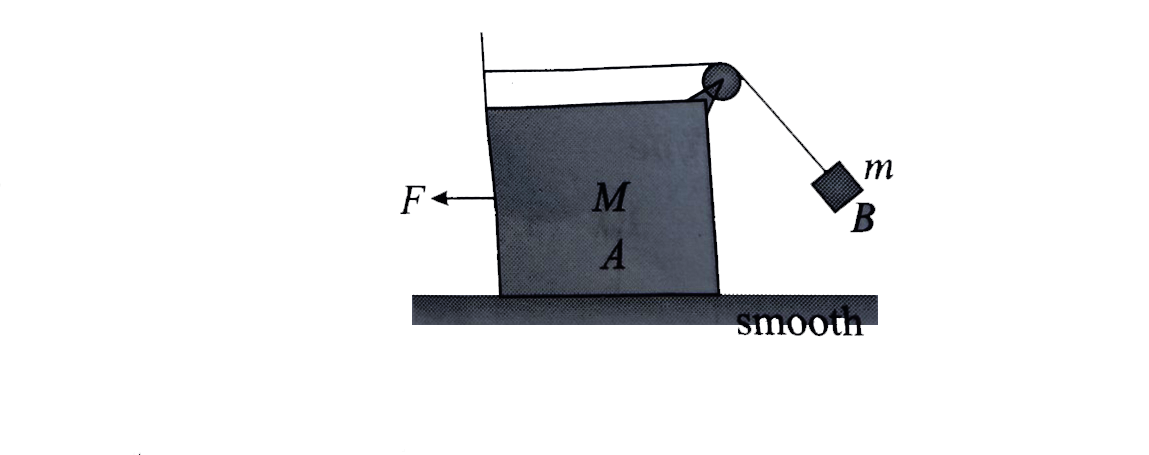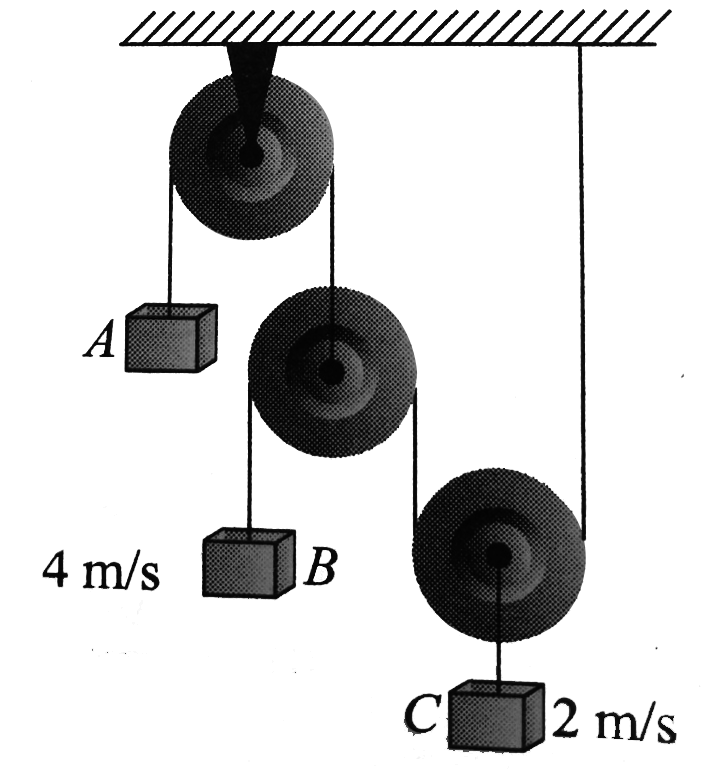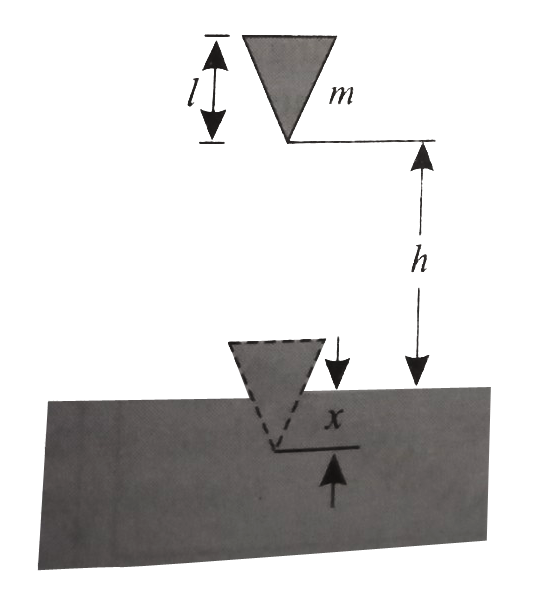subjective type from CENGAGE PHYSICS Chapter 6 CENGAGE PHYSICS DPP for Class 12
| Class 12 | PHYSICS |
| Chapter | CENGAGE PHYSICS DPP |
| CENGAGE PHYSICS | subjective type |
| Medium | English |
| Academic Year | 2023-2024 |
Question 4
A particle of mass m is located in a region where its potential energy [U(x)] depends on the position x as potential Energy [U(x)]=1x2−bx here a and b are positive constants…
(i) Write dimensional formula of a and b
(ii) If the time perios of oscillation which is calculated from above formula is stated by a student as T=4πa√mab2, Check whether his answer is dimensionally correct.View SolutionQuestion 6
A physical quantity X is related to four measurable quantities a,b,c and d as follows X=a2b3c52d−2. The percentage error in the measurement of a,b,c and d are 1%,2%,3% and 4% repectively. What is the percentage erroe in quantity X? If the value of X calculated on the basis of the above relation is 2.763, to what value should you round off the result.View SolutionQuestion 19
A driver having a definite reaction time is capable of stopping his car over a distance of 30 m on seeing a red traffic signal, when the speed of the car is 72 km/hr andover a distance of 10 m when the speed is 36 km/hr. Find the distance over which he can stop the car if it were running at a speed of 54 km/hr. Assume that his reaction time and the deceleration of the car remains same in all the three cases.View SolutionQuestion 20
A boy throws a ball in air at 60∘ to the horizontal along a road with a speed of 10m/s. Another boy sitting in a car passing by observes the ball. Sketch the motion of the ball as observed by the boy in the car, If car has a speed of (18km/h). Give explanation to support your diagram.View SolutionQuestion 21
A girl riding a bicycle with a speed of 5m/s to wards Noth direction, observes rain falling vertically down. If she increases her speed to 10m/s, rain appeard to meet her at 45∘ to the vertical . What is the speed ot the rain ? In what direction does rain fall as observed by a ground based observer ?View SolutionQuestion 23

A rod AB is moving on a fixed circle of radius R with constant velocity v as shown in figure. P is the point of intersection of the rod and the circle. At an instant the rod is at a distancex=3R5 from centre of the circle. The velocity of the rod is perpendicular to the rod and the rod is always parallel to the diameter CD.
(i) Find the speed of point of intersection P.
(b) Find the angular speed of point of intersection P with respect to centre of the circle.View SolutionQuestion 24
A helicopter of mass 2000 kg rises with a vertical acceleration of 15ms−2. The total mass of the crew and passengers is 500 kg. Give the magnitude and direction of the (g=10ms−2)
(a) Force on the floor of the helicopter by the crew and passengers.
(b) action of the rotor of the helicopter on the surrounding air.
(c ) force on the helicopter dur to the surrounding air.View SolutionQuestion 26
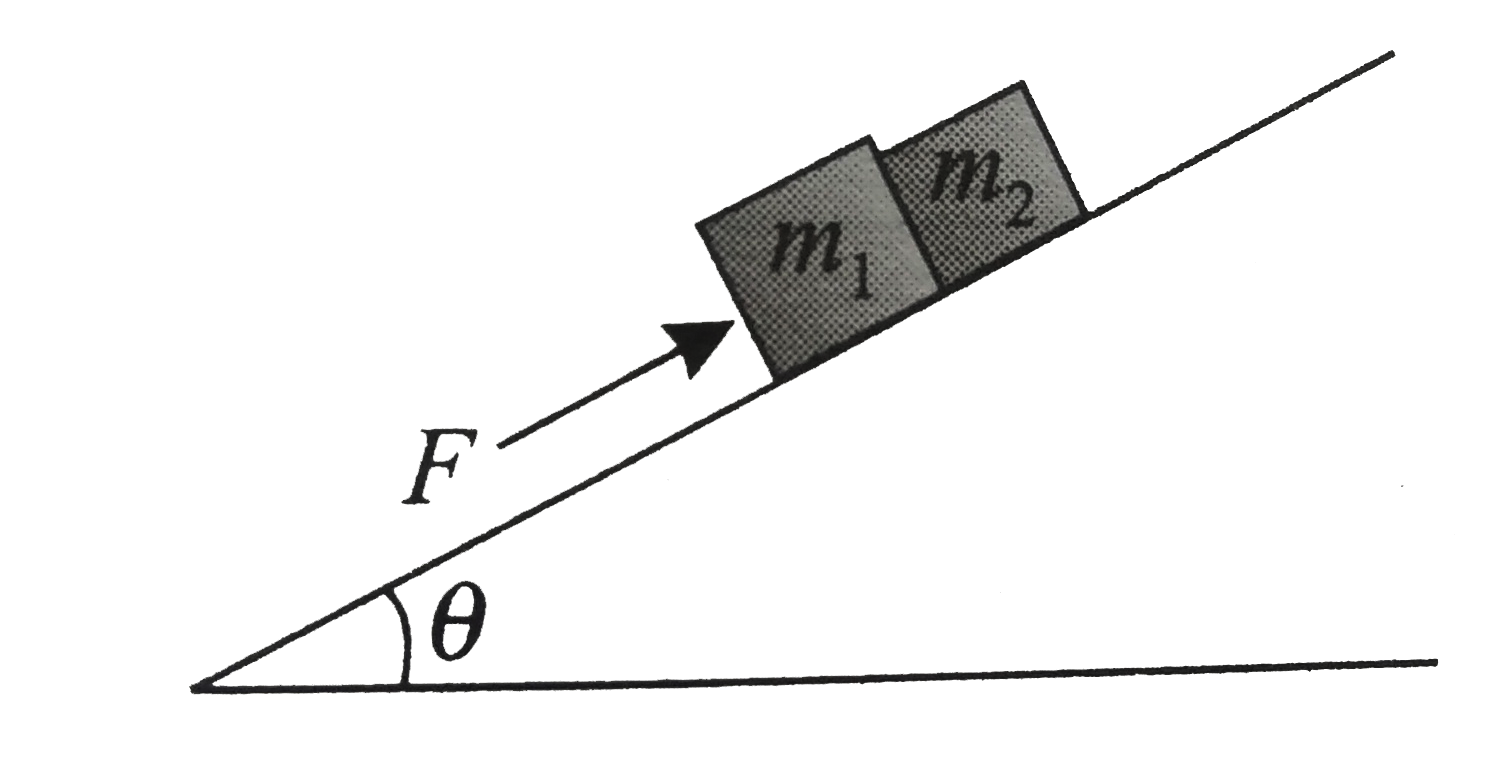
Two blocks are placed at rest on a smooth fixed inclined place. A force F acts on block of mass m1 and is parallel to the inclined plane as shown in figure. Both blocks move up the incline. Then
(i) Draw free body diagram blocks of mass m1 and blocks mass m2
(ii) Find acceleration of blocks of mass m1 and blocks mass m2
(iii) Find normal reaction between the blocks of mass m1 and m2View SolutionQuestion 30


Suppose you are sitting on an accelrating trolley car.
(i) Find the pseudo force action on the block of mass m placed on the trolley car.
If the block is placed (or moved) outside the trolley car, and an external force F acts in horizontal direction.
(ii) Find the pseudo force acting on the block as viewed by the observer.
(iii) Find the acceleration of the block as seen by the oberseverView SolutionQuestion 32
The block of mass m is in equilibrium relative to the smooth wedge of mass M which is pushed by a horizontal force F. Find pseudo force acting on (a) m, (b)M as viewed by the observer sitting on the wedge. Will these pseudo forces (c ) equal and opposite, action reaction pairs? Explain.
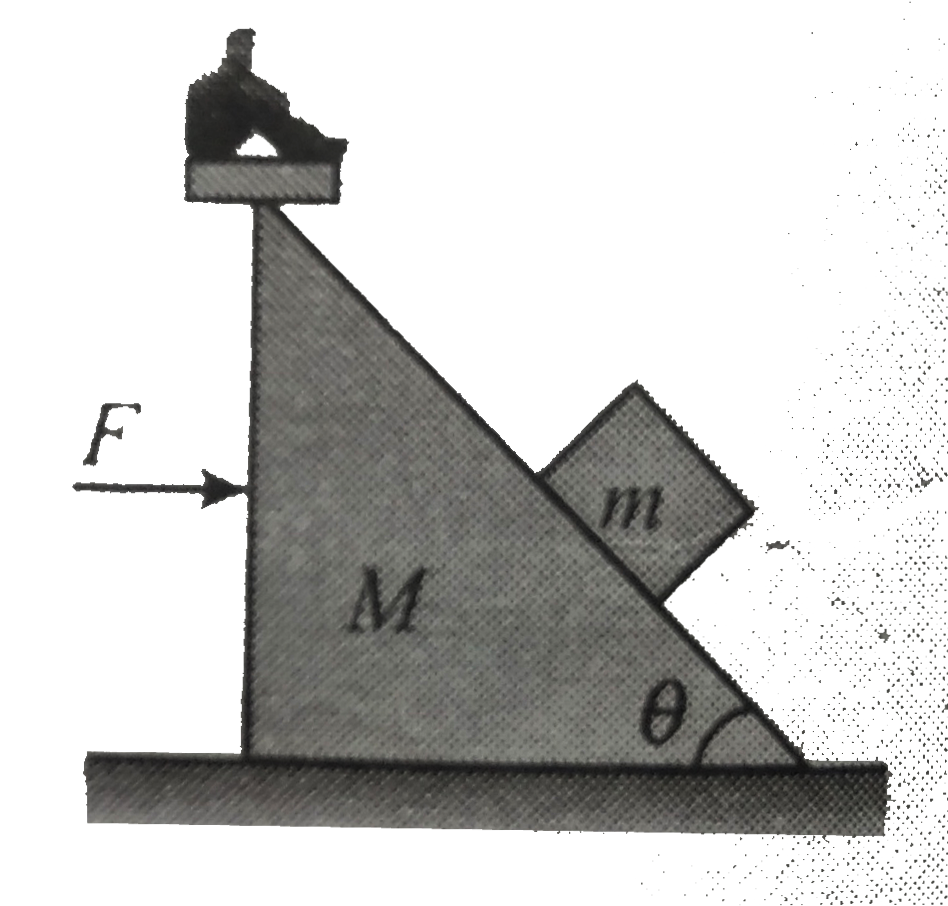 View Solution
View SolutionQuestion 36
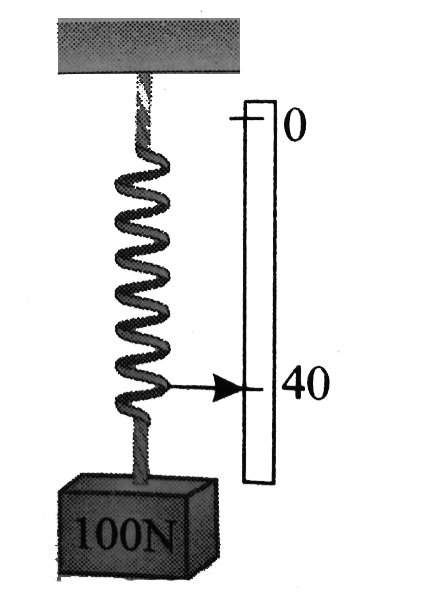
An ideal speing, with a pointer attached to its end, hangs next to a scale. With a 100 N weight attached and in equilibrium, the pointer indicates 40 on the scale as shown. Using a 200 N weight instead results in 60 on the scale. Using an unknown weight X instead results in 30 on the scale. Find the value of X isView SolutionQuestion 37

In an elevator a system is arranged as shown in figure. Initially elevator is at rest and the system is in equilibrium with middle spring unstretched. When the elevator accelerated upwards, it was found that for the new equilibrium position (with respect to lift), the further extension i the top spring is 1.5 times that of the further compression in the bottom spring, irrespective of the value of acceleration
(a) Find the value of m1m2 in terms of spring constants for this happen.
(b) if k1=k2=k3=500Nm and m1=2 kg and acceleration of the elevator is 2.5ms2, find the tension in the middle spring in the final equilibrium with respect to lift.View SolutionQuestion 39
A block of 7 kg is placed on a rough horizontal surface and is pulled through a variable force F(in N) =5t, where 't' is time in second, at an angle of 37∘ with the horizontal as shown in figure. The coefficient of static friction of the block with the surface is one. if the force starts acting at t=0 s, find the time at which the block starts to slide. (Take g=10m/s2)
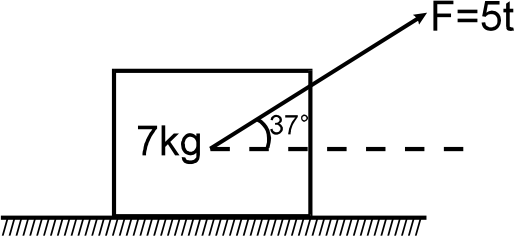 View Solution
View SolutionQuestion 40
The block of mass m1 is placed on a wedge of an angle θ, as shown. The block is moving over the inclined surface of the wedge. Friction coefficient between the block and the wedge is μ1, whereas it is μ2 between the wedge and the horizontal surface. if μ1=12,θ=45∘,m1=4kg,m2=5kg and g=10m/s2, find minimum value of μ2 so that the wedge remains stationary on the surface. express your answer in multiple of 10−3
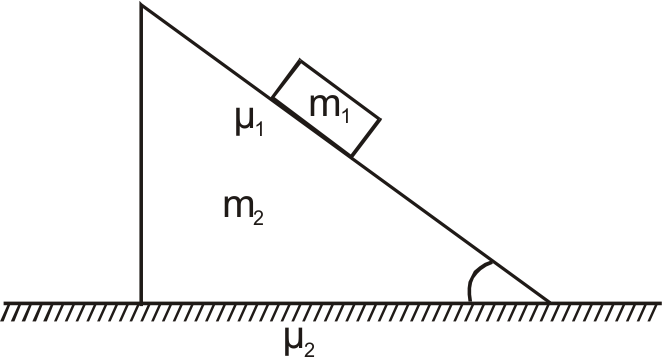 View Solution
View SolutionQuestion 41

In the figure shown , the coefficient of static friction between B and the wall is 23 and the coefficient of kinetic friction between B and the wall is 13. Other contacts are smooth. Find the minimum force F required to lift B, up. Now if the force applied on A is slightly increased than the calculated value of minimum force, then find the acceleration of B. mass of A is 2m and the mass of B is m. Take tanθ=34View SolutionQuestion 42

Two blocks of mass M and 3M (in kg) are connected by an inextensible light thread which passes over a light frictionless pulley. The whole system is placed over a fixed horizontal table as shown.The coefficient of friction between the blocks and table surface is μ. The pulley is pulled by a string sttached to its centre and accelerated to left with acceleration a(ms2). Assume that gravity acts with constant acceleration g(ms2) downwards through the plane of table. Then:
(a) Find the forizontal accelration of both the blocks (Assume that both the blocks are moving.)
(b) What is the maximum acceleration a, for which the block of mass 3 M will remain stationary?View SolutionQuestion 44
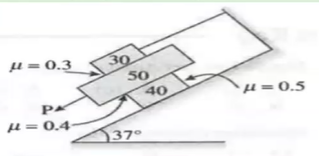
The three flat blacks in the figure are positioned on the 37%∘ incline and a force parallel to the inclined plane is applied to the middle blocks. The upper blocks is prevented from moving by a wire which attaches it to the fixed support. The masses of three blocks in kg and coefficient of static friction for each of the three pairs of contact surfaces is shoen in the figure. Determine the maximum value which force P may have before slipping take place anywhere.View SolutionQuestion 45
1 kg particle at a height of 4 m has a speed of 2 m/s down a incline making an angle 53∘ with horizontal as shown in figure. It slides on a horizontal section of length 3 m at ground level and then up an incline making an angle 37∘ with horizontal. All surfaces have μk=0.5. How far from point O (bottom of right inclined plane), along the incline making and angle 37∘ with horizontal, does the particle first come to rest?View SolutionQuestion 47
A particle of mass m=1kg lying on x-axis experiences a force given by law
F=x(3x−2) Newton.
Where x is the x-coordinate of the particle in meters.
−−−−−−−−−→x=0x=4
(a) Locate the point on x-axis where the particle is in equilibrium.
(b) Draw the graph of variation of force F (y-axis) with x-coordinate of the particle (x-axis). Hence or otherwise indicate at which positions the particle is in stable or unstable equilibrium.
(c ) What is the minimum speed to be imparted to the particle placed at x=4 meters such that it reaches tha origin.View SolutionQuestion 48
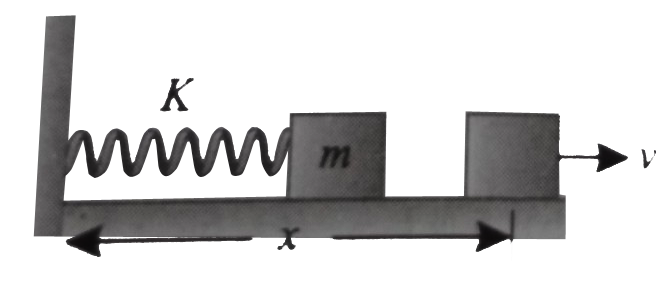
A block of mass m is pushed against a spring of spring constant k fixed at one end to a wall.The block can slide on a frictionless table as shown in the figure. The natural length of the spring is L0 and it is compressed to one fourth of natural length and the block is released.Find its velocity as a function of its distance (x) from the wall and maximum velocity of the block. The block is not attached to the spring.View SolutionQuestion 49
Consider a one-dimensional motion of a particle with total energy E. There are four regions A, B, C and D is which the relation between potential energy U, kinetic energy (K) and total energy E is as given below
RegionA:U>E Region B:U<E
Region C:K<E Region D:U>E
State with reason in each case whether a particle can be found in the given region or not.View SolutionQuestion 50
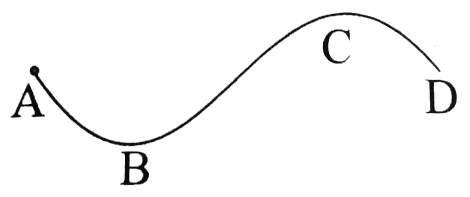
A curved suface is shown in figure. The portion BCD is free of friction. There are three spherical balls of identical radii and masses. Balls are released from rest one by one from A which is at a slightly greater height than C.
Wioth the surface AB, ball 1 has large enough friction to cause rolling down without slipping, ball 2 has a small friction and ball 3 has a negligible friction.
(a) For which ball is total mechanical energy conserved?
(b) Which ball(s) can reach D?
(c )For ball which do not reach D, which of the balls can reach back A?View SolutionQuestion 51
A particle of mass 5kg is free to slide on a smooth ring of radius r=20cm fixed in a vertical plane. The particle is attached to one end of a spring whose other end is fixed to the top point O of the ring. Initially, the particle is at rest at a point A of the ring such that ∠OCA=60∘, C being the centre of the ring. The natural length of the spring is also equal to r=20cm. After the particle is released and slides down the ring, the contact force between the particle and the ring becomes zero when it reaches the lowest position B. Determine the force constant (in×102Nm−1) of the spring.
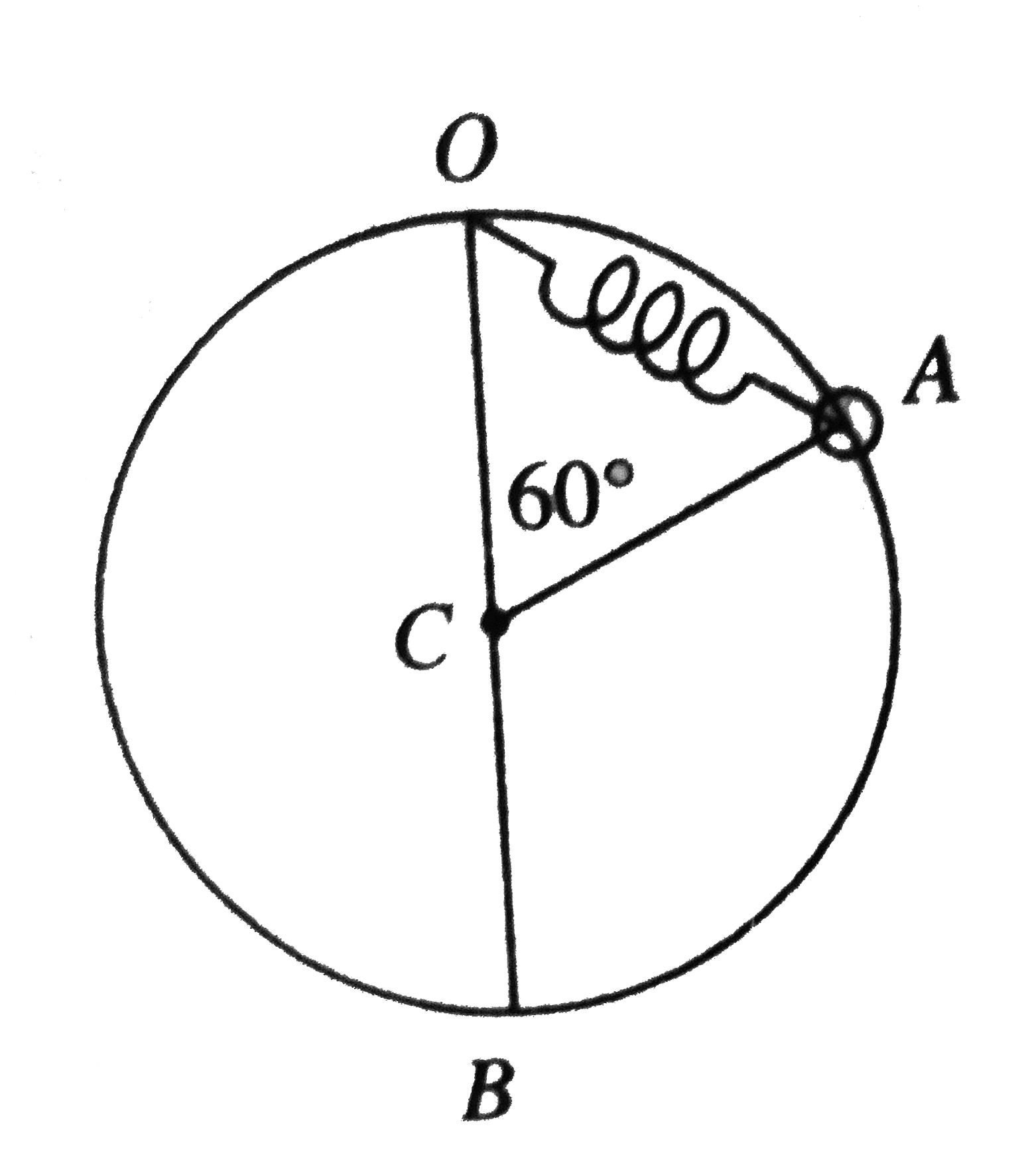 View Solution
View Solution
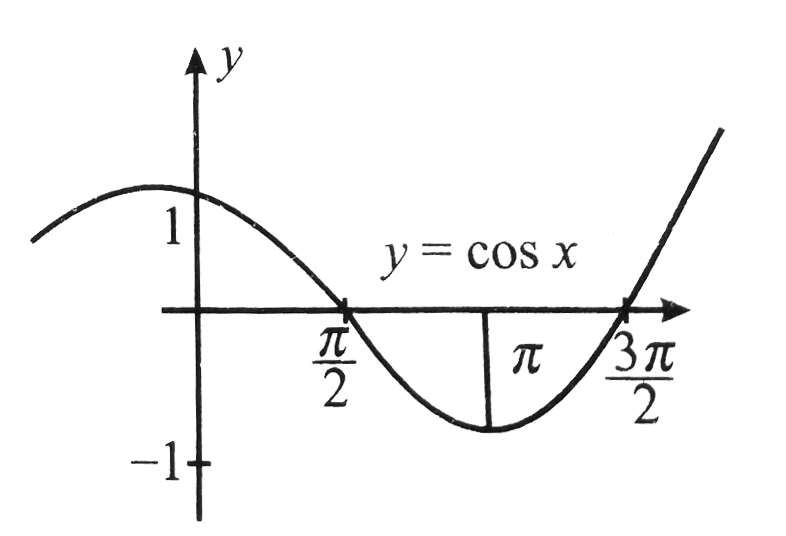
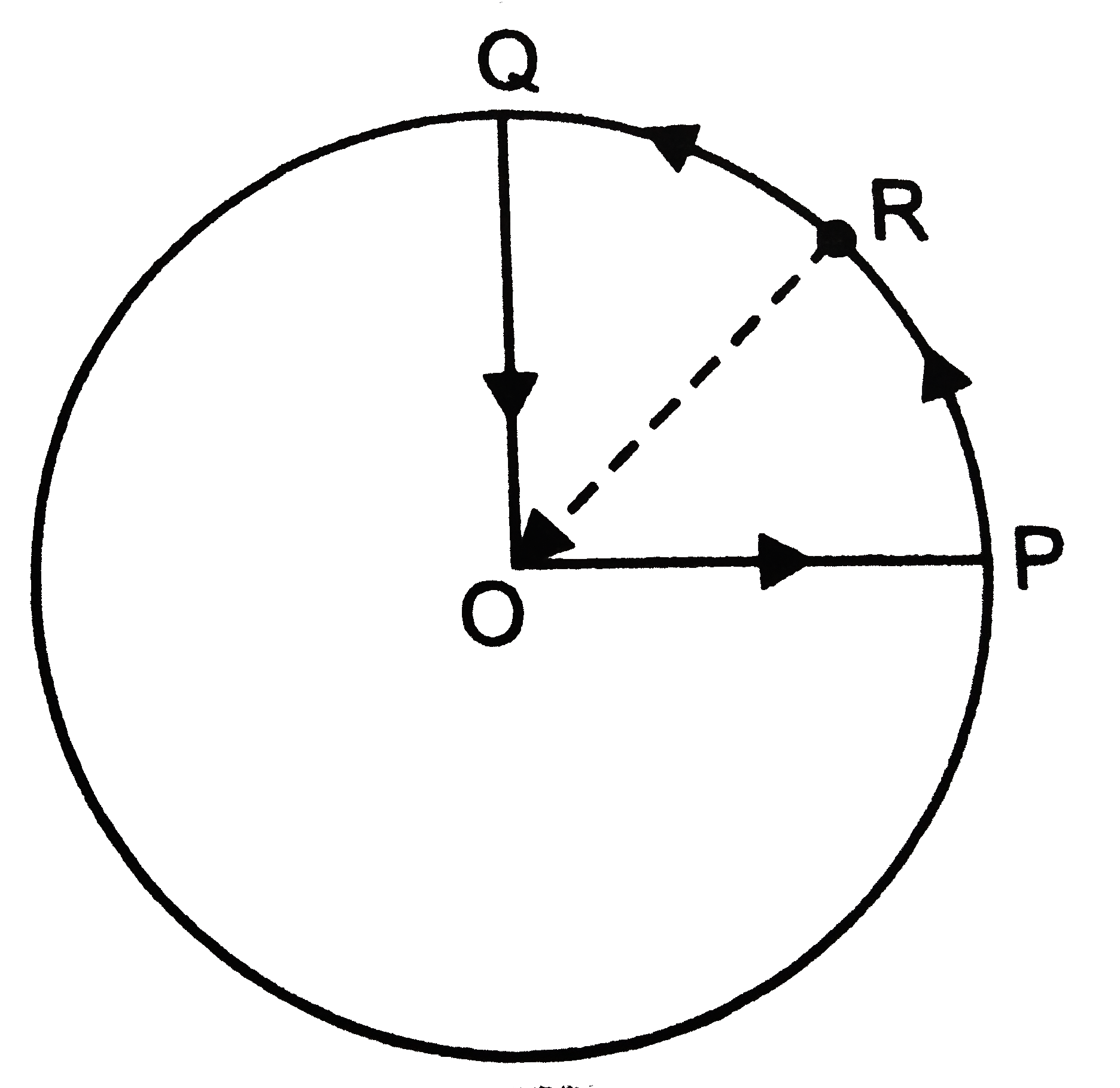 .
. 
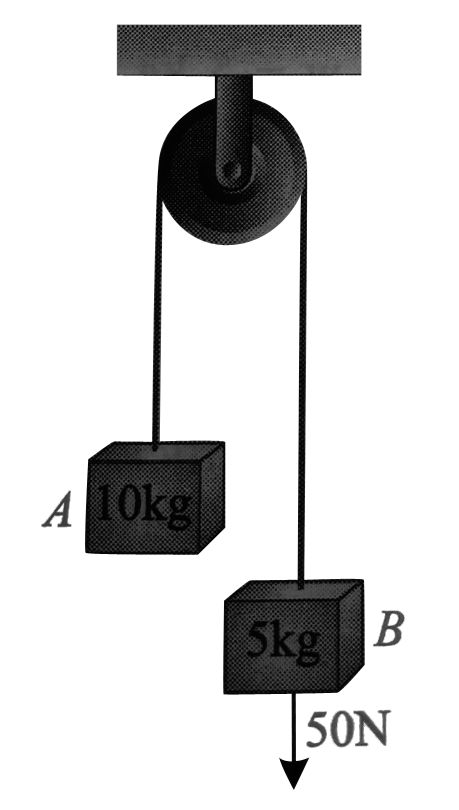
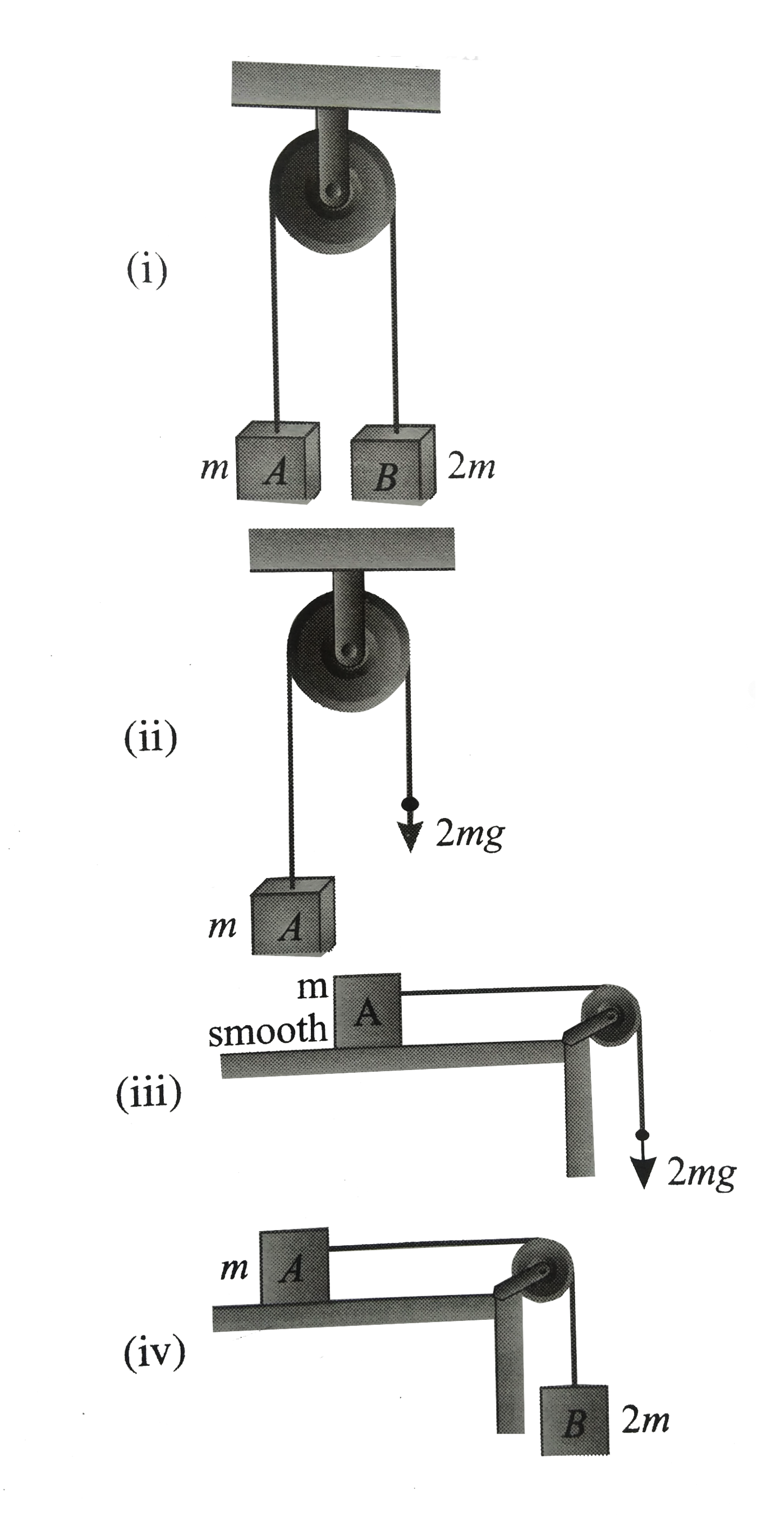 In which of the following cases the magnitude of acceleration of the block A will be maximum (neglecting friction, mass of pulley and string)
In which of the following cases the magnitude of acceleration of the block A will be maximum (neglecting friction, mass of pulley and string)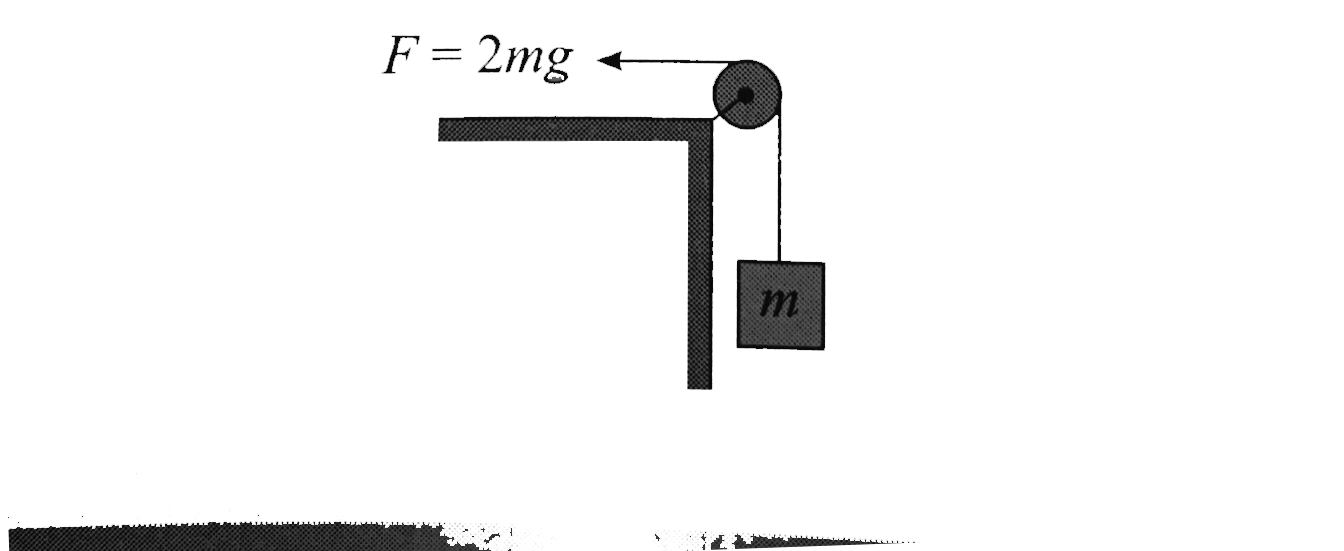 The block of mass
The block of mass 